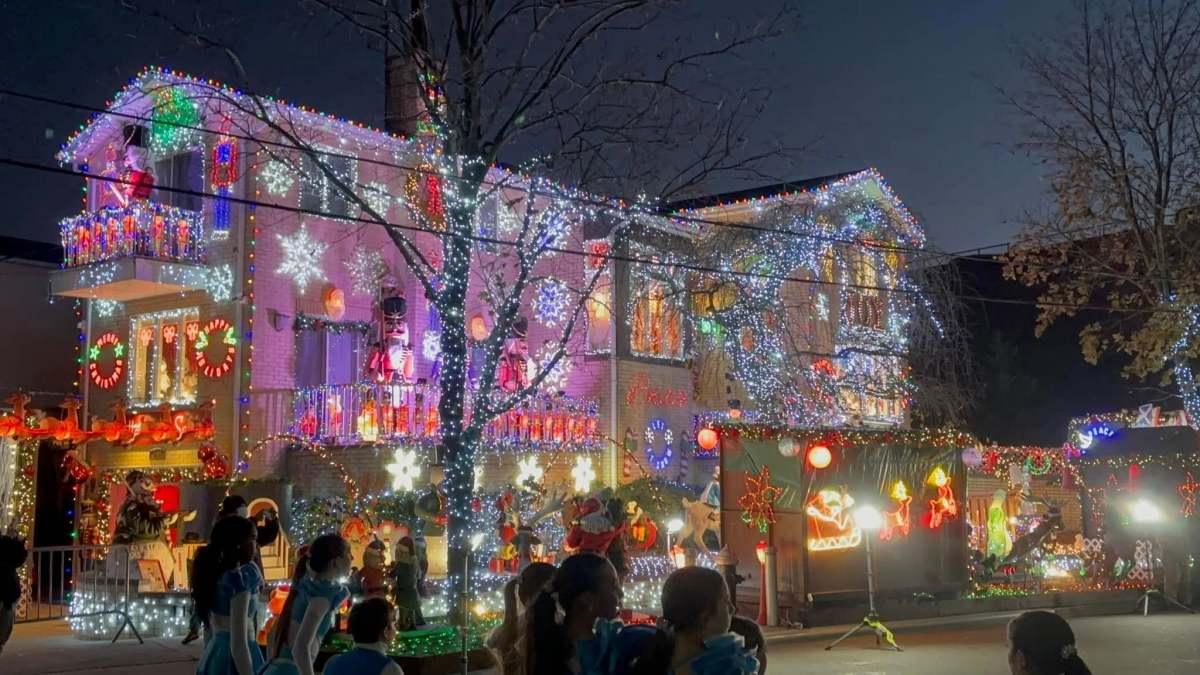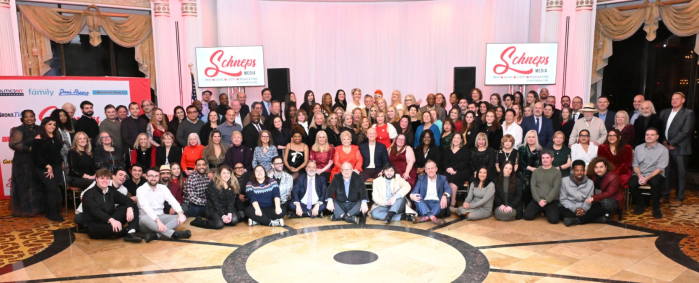
BY ALBERT AMATEAU | New York University’s plan to add four new buildings and a total of about 2 million square feet of development to its two superblocks south of Washington Square Park was aired at a City Council hearing last week.
University officials, opponents and supporters of the plan and councilmembers spent about eight hours on Fri., June 29, going over the application to expand N.Y.U.’s Greenwich Village campus over the next 19 years.
The Council will make a final decision on the plan at a Wed., July 25, vote, completing the city’s Uniform Land Use Review Procedure (ULURP) that began in October.
An hour before the 9:30 a.m. hearing, opponents of the plan, including preservation advocates, superblocks residents and N.Y.U. faculty members, rallied on the steps of City Hall.
A half hour later, supporters of the N.Y.U. 2031 plan, including construction union and building service union members, gathered in a smaller demonstration on the steps before the Council Chamber doors opened.
N.Y.U. President John Sexton told the Council’s Subcommittee on Zoning and Franchises that the plan was intended to strike a balance between the university’s pressing need for new space and concern for the Greenwich Village neighborhood.
He said the university is meeting half of its total need for 6 million square feet outside the Village, including in the N.Y.U. medical corridor along First Ave. between 29th and 34th Sts. and in the MetroTech Center in Downtown Brooklyn, where the N.Y.U. Polytechnic engineering school is located.
The total cost of the entire 6 million-square-foot expansion is estimated to be $6.2 billion.

But councilmembers, who noted that Community Board 2 rejected the university’s plan for the superblocks, said the proposed development was too big and too tall.
“What about a Plan B?” asked Queens Councilmember Leroy Comrie, chairperson of the Council’s Land Use Committee.
“Is there room to negotiate in order to reach a consensus?” asked Councilmember Robert Jackson of Washington Heights.
“I’m still concerned about the size and scale of the project,” said Councilmember Dan Garodnick, who represents Stuyvesant Town, East Midtown and part of the Upper East Side.
“It seems too dense and way too tall,” said Jessica Lappin, an Upper East Side councilmember, adding, “It’s a residential neighborhood and that is our concern.”
Sexton replied that the university’s assessment of space needs in the Village was as accurate as possible.
“If we can’t meet our needs on this site we will have to meet them elsewhere in the core,” he said. “We did not conceive of this project by inflating our needs and expecting it to be reduced,” he said.
“If this goes forward as planned we don’t expect to have anything else in the core,” Sexton added.

None of the proposed new buildings would be taller than any of the existing buildings on the north and south superblocks, Sexton noted.
Moreover, a planned hotel use in the so-called “Zipper Building” on the Mercer St. side of the south superblock has been dropped, he said.
Nevertheless, Councilmember Margaret Chin, whose district includes the superblocks, said, “I strongly believe that this plan is unacceptable in its current form.”
Councilmembers who represent an area where a project is located usually have the most influence on Council land use issues.
Although she acknowledged N.Y.U.’s importance and the proposal’s potential for bringing new jobs and new economic opportunities to the city, Chin said her priority will be to reduce density on the north and south superblocks.
She said later that reducing the density of the “Zipper Building” and the LaGuardia Place and Mercer St. “Boomerang Buildings” on the north superblock would be among the targets for reducing density.
“N.Y.U.’s academic and housing needs should be prioritized in this plan but not at the expense of residents’ quality of life,” Chin said.
Regarding public open space, Chin said the green, open-space strips along Mercer St. and LaGuardia Place owned by the city should serve as a buffer for residents in Washington Square Village on the north superblock between the proposed new buildings.
“These strips must be preserved in the final plan,” she said.
Chin and other advocates are also concerned about the fate of 505 La Guardia Place, a Mitchell-Lama building with moderate-income residents. N.Y.U.’s land lease for the building expires in two years, making the future uncertain for residents, many of who are seniors.
“Just give it to them,” state Senator Tom Duane said during his June 29 testimony, regarding 505 LaGuardia Place.
The ULURP application says the proposed redevelopment would create 90,000 square feet of public open space, considerably more than what is available currently.
But Tobi Bergman, chairperson of the C.B. 2 Parks Committee, said the plan creates public space that would never be used by the public.
“It would be an inward-facing student area,” Bergman said of the university’s plan to create a new public green space in the middle of Washington Square Village, replacing the current Sasaki Garden.
Assemblymember Deborah Glick said the open space formula in the city review is deceptive. In fact, the project would actually decrease public space, she asserted.
“For example, the fallacy that a green space without a bench is not considered public space but a paved lot with a bench is public open space is unacceptable,” Glick said. “The proposal as it stands now will create many pedestrian plazas and paved walkways but will destroy much of the green open space currently in the area,” she said.
The City Planning Commission last month recommended the creation of an Open Space Oversight Organization that could address some concerns. But Glick said this body would not address community needs unless the organization is given power in the design of open space.
David Gruber, the new chairperson of C.B. 2, said that during the first 10 years of the development project, when the south superblock is under construction, only 18 percent of the project would be for academic uses.
“Why not look at the north superblock in 10 years? Why should we give N.Y.U. a blank check?” he asked. “The north superblock does not belong in this plan,” said Gruber.
Late in the day, actor Matthew Broderick, a resident of the Village with his wife, Sarah Jessica Parker, appeared to testify. Broderick grew up in the neighborhood.
“They might need to expand but they certainly don’t need to destroy the Village,” Broderick told reporters. “I used to play in the area when I was a child; it was very important to me growing up. I’ve watched so much of it disappear. I think it’s gone too far and it’s really hurting the Village,” he said.
Although cheering and applauding weren’t allowed, so as to keep the hearing moving, Broderick’s comments were met with an explosive flurry of flickering hands in the air — which was how the opponents showed their agreement with the speakers.
Andrew Berman, executive director of the Greenwich Village Society for Historic Preservation, submitted a petition against the project with nearly 3,000 signatures. The preservationist also submitted studies that compare the economic and environmental impacts that N.Y.U.’s expansion would have if were located in the Financial District, Downtown Brooklyn or Long Island City.
G.V.S.H.P. also submitted a study claiming the university has eliminated hundreds of faculty housing units over the years while seeking approvals now for more faculty housing.
Nevertheless, major labor and business groups testified in favor of the N.Y.U. 2031 plan.
Tony Juliano, chairperson and president of the Greenwich Village-Chelsea Chamber of Commerce, told the councilmembers that the plan is vital for the small business community.
“From the Chamber’s point of view, N.Y.U.’s 16,000 employees, 40,000 students and tens of thousands of visitors provide the economic lifeblood for our neighborhood,” Juliano said.
The NAACP and the Association for a Better New York submitted testimony saying that N.Y.U.’s expansion would have important beneficial effects far beyond the Village. The Real Estate Board of New York and the Union Square Partnership also submitted testimony in favor of the project.
Robert Bartels Jr., business agent for Steamfitters Local 683, said the project would create jobs as early as 2013 when construction could begin on the 800,000-square-foot “Zipper Building.”
“More importantly, N.Y.U. has committed to using union labor, providing union wages and benefits,” Bartels said. “These are the wages and benefits which are crucial to building strong and stable neighborhoods and communities.”
Paul Fernandez, chief of staff of the Greater New York Building Trades and Construction Council, comprised of 15 unions with 100,000 members, said the N.Y.U. 2031 plan would create 18,200 full-year jobs over the next two decades.
“Not only do three out of four members of the industry live in New York City,” Fernandez said, “but these members represent the diversity of local communities, with African-Americans, Hispanics, Asians and other minorities now comprising the majority of the workforce.”



































